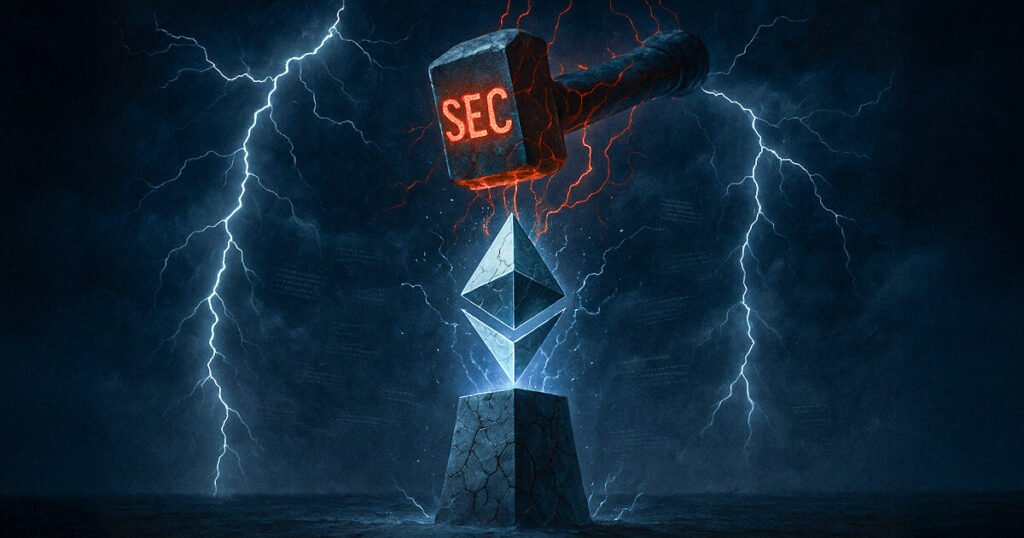The Urgent Call for Regulatory Clarity on Crypto Staking
A coalition of prominent U.S. blockchain firms has issued a powerful appeal to the Securities and Exchange Commission (SEC) for transparent regulatory guidance on crypto staking. Led by the Crypto Council for Innovation, this coalition has highlighted the need for the SEC to delineate the status of staking with the same clarity it recently provided regarding proof-of-work (PoW) mining. The crux of their argument is that staked tokens should not be treated as securities, as this classification might hinder innovation and growth in the blockchain sector.
Understanding Crypto Staking
At its core, staking is a fundamental technical process employed in proof-of-stake (PoS) blockchain networks to ensure security and integrity. The Crypto Council emphasizes that staking is not merely an investment contract; rather, it is essential for maintaining the proper functioning of blockchain networks. By staking their tokens, users can validate transactions and contribute to the durability of the network. In return, they are rewarded with tokens based on each network’s protocol, creating a system where rewards are not fungible or dictated by a centralized authority.
SEC’s Position on Mining
In an important step towards regulatory clarity, the SEC Division of Corporation Finance issued a statement in March 2025 affirming that mining on decentralized networks does not constitute a securities transaction. This ruling has provided much-needed clarity for miners working within this environment. The Crypto Council argues that the same logic should apply to staking. Since the functions performed by both stakers and miners are fundamentally administrative and supportive of the blockchain infrastructure, treating them uniformly maintains regulatory coherence.
The Risks Involved in Staking
While the letter to the SEC acknowledges certain risks associated with staking—most notably slashing, where participants could lose tokens for not adhering to protocol rules—it highlights that such incidents are infrequent. Furthermore, slashing is not an element that defines the economic model of staking. This distinction is crucial: stakers are primarily engaged in activities that enhance network security and reliability, rather than pursuing speculative investments. Therefore, applying securities laws to staking would be misguided.
Need for Regulatory Clarity
The Crypto Council argues that clear guidelines from the SEC would have far-reaching implications for the entire blockchain ecosystem. Simplified regulations would clarify the roles of various stakeholders, including developers and service providers, and would also benefit end-users. One of the notable concerns expressed is that lack of clear guidance complicates the operations of platforms offering staking, particularly those tied to cryptocurrency exchange-traded funds (ETFs). This increased regulatory uncertainty could stymie innovation and deter investment in the blockchain sector.
Enhancing U.S. Competitiveness
Moreover, the Crypto Council believes that formal guidance from the SEC can bolster the United States’ position as a leader in the global digital asset space. With other jurisdictions moving quickly to adopt supportive regulations for blockchain technologies, the U.S. risks falling behind. Yet, the Council warns against overly stringent regulations that could stifle creativity and reinforce outdated market practices. It’s essential to strike a balance between fostering innovation and maintaining necessary regulatory oversight to protect consumers.
Conclusion
In conclusion, the appeal by the Crypto Council for clearer regulatory guidance on crypto staking is vital for the growth and stability of blockchain networks. By aligning the regulatory classification of staking with that of mining, the SEC can facilitate a more supportive environment for innovation while mitigating potential risks. The ongoing conversation around crypto regulations highlights that a well-defined framework can empower stakeholders and keep the U.S. competitive on the global stage, ultimately benefiting the entire digital asset ecosystem. The time for action is now—stakeholders are eager for clarity, and the influence of regulatory decisions will shape the future of the blockchain industry.

















